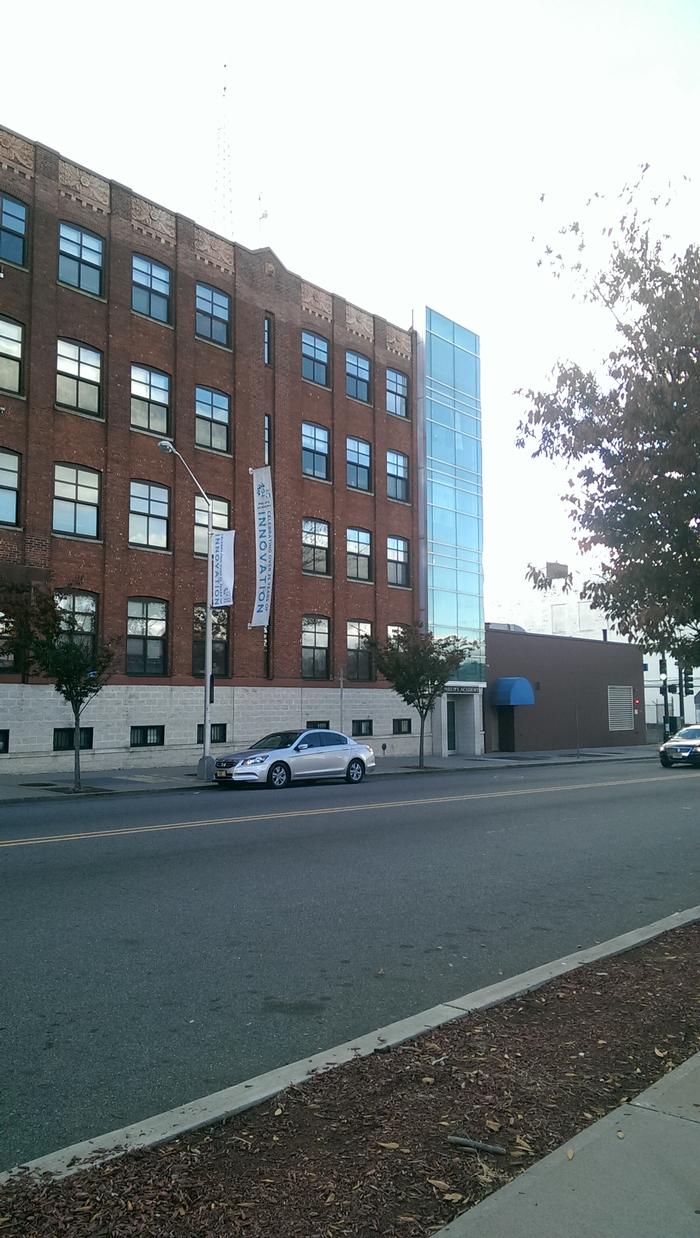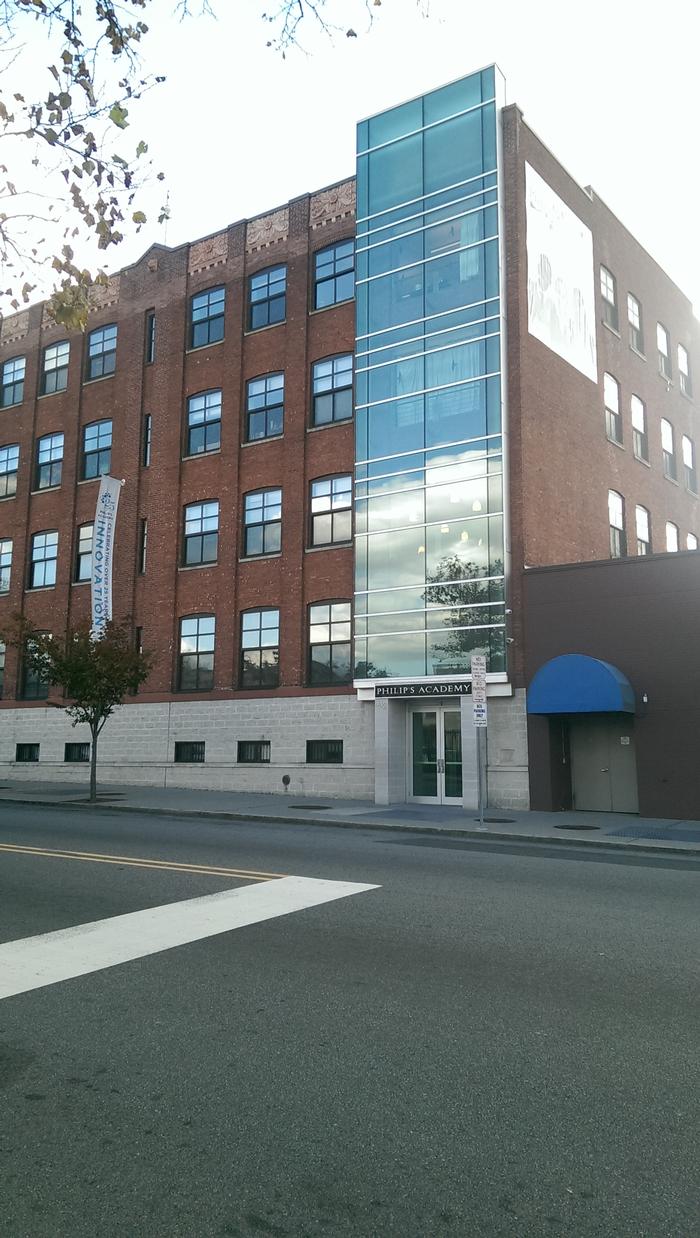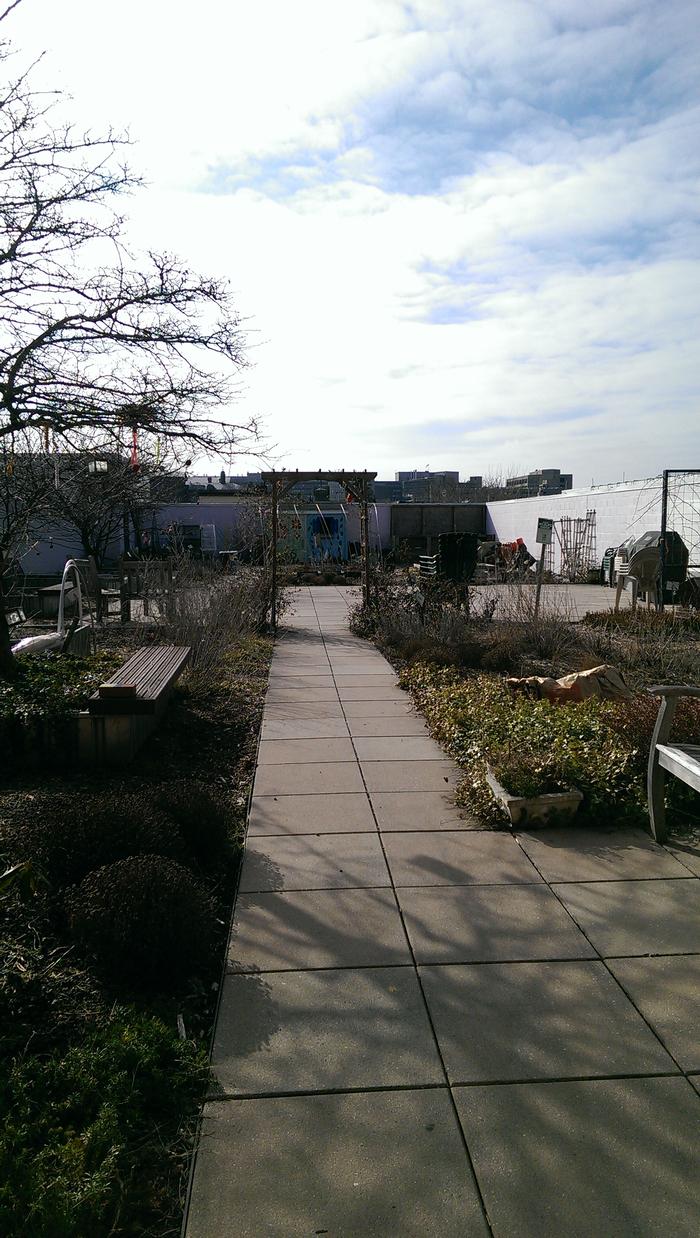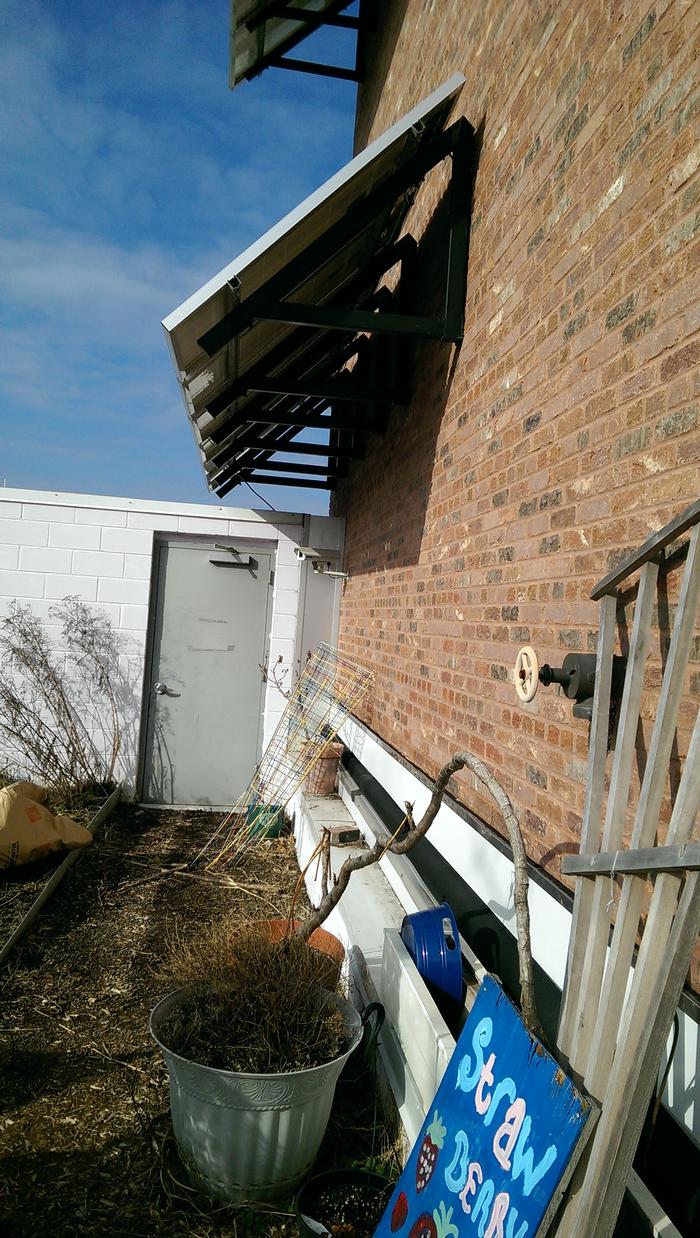[ID:1481] Education through EnvironmentalismUnited States When I think about community development, I recall a quote by Dorothy Height, a renowned educator and activist, that states “Without community service, we would not have a strong quality of life. It's important to the person who serves as well as the recipient. It's the way in which we ourselves grow and develop.” Philip’s Academy Charter School, a public charter school, located in the Central Ward of Newark New Jersey, completely embodies the idea of educating students on the importance of community through architectural design concepts and ecoSPACES.
Newark is notorious for many things such as its percentage of citizens living below the poverty level, being a food desert, and its rising crime rate. To an outsider, Newark is seen as someplace to stay away from. That attitude from surrounding neighborhoods seeps into the community and poisons the minds of residents. This results in people not having pride in where they come from. The reversal of this negative thinking must begin with education.
Philip’s Academy uses ecoSPACES to emphasize the importance of community. An ecoSPACE can be defined as an environmentally friendly area that focuses on teaching sustainability through design. Philip’s Academy Charter School’s prime ecoSPACE is their famous roof top garden. The garden itself is right above the gym. Because it holds a lot of soil and is structurally heavy, the gym below must be able to support the weight of the garden. Therefore, the gym has large attention grabbing trusses on the ceiling. The rooftop garden is the responsibility of the entire of school community. Each grade level, kindergarten through eighth grade, has a plot that they tend to.
The curriculum of Philip’s Academy Charter School is based on what can be learned from the rooftop garden, concepts such as sustainability and wellness are deeply engrained into the student body. Core subjects, such as math, reading, and science are incorporated in the ecoSPACES. Science is taught through student soil testing. One way math and reading is incorporated is through what is called the Recipe of the Month. Students use ingredients grown within the school to create a certain dish. By measuring ingredients and reading the recipe these core skills are exercised.
When I visited the school, the Recipe of the Month was borscht, a traditional Russian soup; something that even I did not know about. The students were very excited to tell me about their experience making borscht. One girl even exclaimed “I never knew something with so many vegetables could taste so good!” The eagerness of the students to share what they learned dictates how proud they are of what they make and of their school.
The EcoSPACES provide a sense of community within the school. One room within the school that enables community development within Philip’s Academy Charter School is their cafeteria, which is named the Dining Room. Everything about the Dining Room represents communal responsibility. Unlike other schools, at Philip’s Academy Charter School, the kitchen is open and the rest of the dining room is able to see how the food is prepared. The transparency gives a fundamental understanding of where their food comes from. It also allows the students to know the chefs and be connected to those that prepare their food.
The reason that the cafeteria is called a Dining Room is because it symbolizes a home. When one eats at home, you are surrounded by family and friends. At the dining room table, which is purposely round, to dictate that no one seat is more important than the other; everyone has a responsibility. At the tables, children of different grades sit with one another, and each child has a task. Based on what chair they are sitting, it dictates what duty the student is responsible for that day. The tasks range from cleaning up the table to getting utensils. It strengthens the concept that everyone in the school is important, regardless of their assignment.
When I was at the school, the sense of community between the students is very apparent just by the way the students interact with each other. Students seemed excited to lend a helping hand. This stems from the importance of community being engrained into the students daily. Students also sell fruits and vegetables from their weekly Farm Stand. This gives the neighborhood the ability to acquire fresh fruits and vegetables. Because Newark is a food desert, something that seems like a small task is actually very beneficial to the city.
Because community is engrained into the Philip’s Academy community, administration works to give the residents of Newark a chance to work with the students. As soon as one walks into the school, there are forms available for people who would like to volunteer with the Academy. It is easy to become involved and highly encouraged. People that volunteer usually assist with maintenance of the rooftop garden. Philip’s Academy also has a high rate of parent involvement. They have a program called “Dad’s Cook” which is an evening where fathers of the student have come into the school and cook with the children, sometimes even learning new recipes.
The parent involvement affects the student in many ways. Students feel encouraged to continue with the hard work when parents show interest in their activities. These events also affect how parents’ shop for groceries. Because students are exposed to different fruits and vegetables, they recommend different items at the grocery store; items that parents would not usually think to buy.
Volunteering and community involvement is important for the progression of Newark. In a way, it can be looked at as a cycle. Children gain a stronger sense of community within the school because of the values they are taught. Students then take what they learn at school and apply it to the community of Newark by doing tasks such as volunteering and community service. Because of this, the community recognizes the children’s effort at bettering the community and in turn volunteers for the school. In the end, everyone helps one another and that is what community is truly about.
Philip's Academy is located on Central Avenue; a well traveled road, accessible by many types of transportation, filled with shops, businesses and homes. Because it is a major road, there is a lot of rush hour traffic in front of Philip’s Academy Charter School during the week. Although there is traffic, neighboring homes and businesses do not generally have a problem with Philip’s Academy or what they do for the children of Newark.
The city of Newark has contradicting views; not just about Philip’s Academy Charter School, but charter schools as a whole. Recently, the city has been divided over charter schools because some feel tax payer dollars should go to funding public schools rather than giving money to the new One Newark Plan. Although some officials have issues with the politics of charter schools, they do not take that out on the children. The city of Newark supports any institution that is for the betterment of students and the community.
Philip’s Academy Charter School has earned several awards and recognition. New Jersey Farm to School Network and Edible Jersey Magazine holds a yearly competition for “School Garden of the Year” and Philip’s Academy was mentioned as one of the top schools in New Jersey with an amazing school garden. If that is not an accomplishment, I don’t know what is! Students at Philip’s Academy have also had the opportunity to be interviewed by reporters from CBS and PBS NewsHour, with reports varying from the roof garden to the curriculum.
As an architecture student, I cannot help but look at Philip’s Academy as a design exercise. As soon as I entered the school, I was met by a grand staircase. The interior is quite compelling because of its open plan, the same strategy used in the Dining Room. A top of the staircase stands the secretary’s desk. This is different than most schools I have visited that have the secretary in a separate office rather than the hallway. This technique embodies the idea that has been discussed several times throughout this essay; the importance of community. When administrative personnel are open to everyone rather than being placed in an office, it allows relationships to build between students because staff is easily accessible.
Another design technique that I appreciated was the attention to detail. Each floor has a different theme, ranging from the ground to the sky. The higher one gets to the top floor, the color scheme becomes closer to that of the sky.
If I were to design an institution, I would incorporate open plans the way Philip’s Academy Charter School does. One thing I would do differently is change the design of the exterior. Although the exterior was designed to retain its original structure of a chocolate factory, as a school it is not very inviting. The tall masonry building although monumental in size, does not stand out to people unless you know to look for it. The project retaining concepts of the original design is not necessarily a bad thing because it fits into the urban fabric of Newark. But for a middle school that is trying to be a leader in innovation and technology, it has to be appealing enough to gather attention from not only Newark residents, but visitors from outside the community.
As a whole, I respect Philip’s Academy Charter School because of its dedication to their students and to the community. I hope to see other schools, even some higher learning institutions, to utilize their design techniques and incorporation of ecoSPACES to further understand the world around them and the impact one person can have on their community. Based on my visit and the information I learned about Philip’s Academy Charter School I know some amazing children will emerge from th
If you would like to contact this author, please send a request to info@berkeleyprize.org. |




